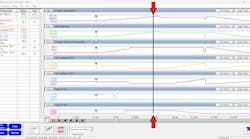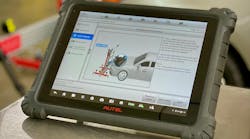Vehicles are only getting more complex. Between ADAS, electric vehicles, and all the creature comforts being added and/or updated on today’s vehicles, it’s easy to get overwhelmed. When a customer brings in their vehicle with an issue that isn’t easily resolved, what do you do? Answer: Follow your diagnostic process. Or create one using the steps below and then follow it.
Step 1 – Recreate the customer’s concern
Though your first instinct may be to plug in your scan tool and see which DTCs pop up, resist this urge. The first step in your process should always be to recreate the issue your customer is having with their vehicle. This may mean doing a ride-along with them to ensure all the circumstances are the same and you don’t get a different result than your customer when doing that final test drive.
Step 2 – Back to basics
One of the dangers of not having a set diagnostic process in your shop is that all your technicians may be going about diagnosing a vehicle in different ways. This means they could be glossing over some of the more basic tests and making assumptions about the vehicle, which could lead to a misdiagnosis. By having all your technicians follow the same steps on every vehicle and perform the same tests checking the basic mechanical and electrical standards, you ensure that nothing is overlooked. This also helps when training a new technician because the steps are the same for everyone.
Step 3 – Upping the ante
With the basics out of the way, it’s time to do some more intrusive tests if necessary. Something along the lines of compression testing or time belt alignment. After completing steps 1-3, if you still don’t have a diagnosis, it’s time to perform some pinpoint tests from the computer to individual components.
Implementing a standard diagnostic process in your shop not only keeps everyone on the same page but also makes it easier to explain to customers what’s being done to their vehicle and provide them with any diagnostic test results.
In our December Diagnostic Process supplement, we’ll take a closer look at some essential tools every shop should have to aid in their diagnostic processes, how to pick these, and tips and tricks on how to use them. We’ll also delve into ADAS and why your shop should consider tapping into this additional revenue stream if you’re not already. Lastly, we’ll take a look at AI in the automotive industry and how that may work in future shops.


